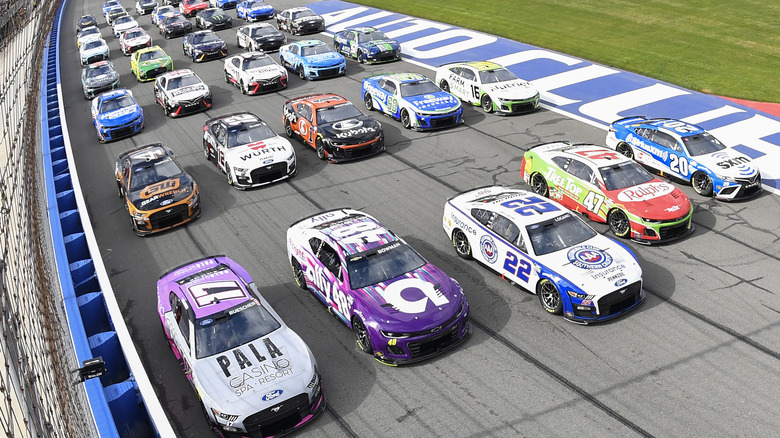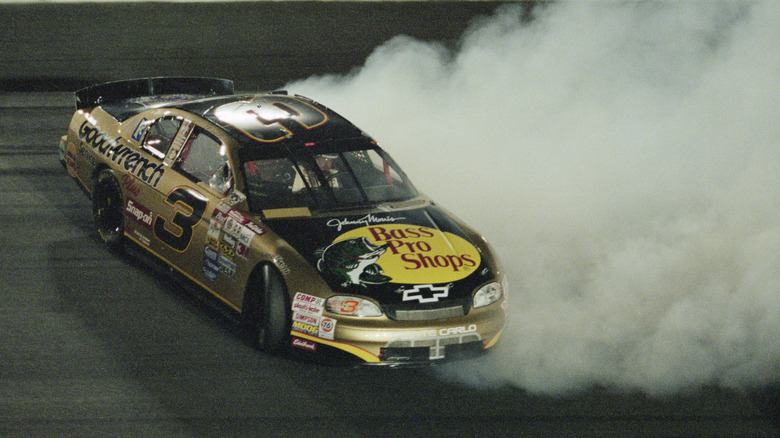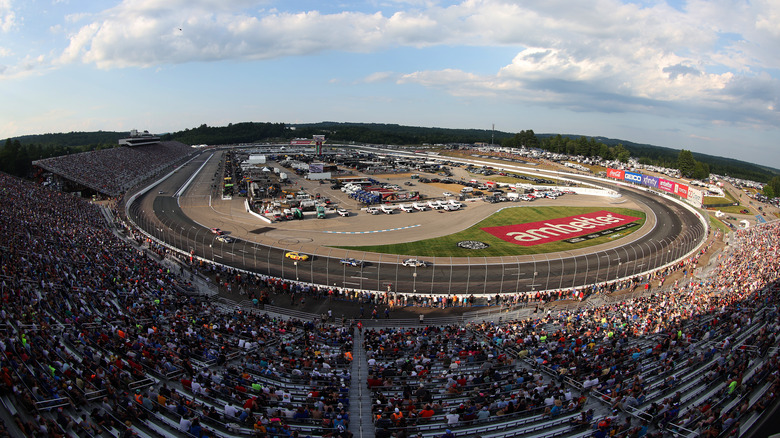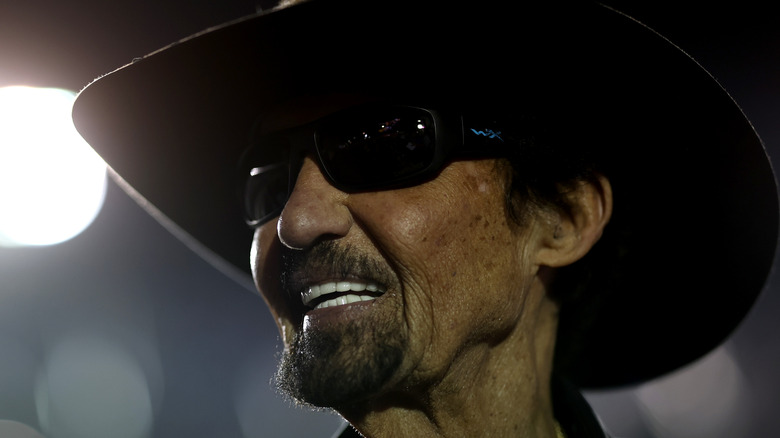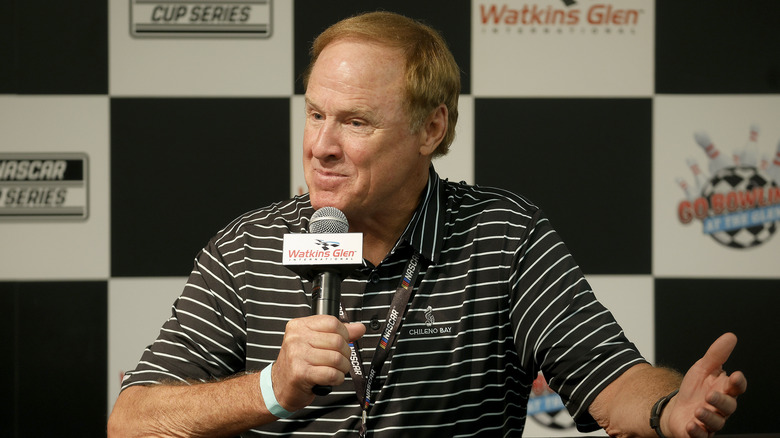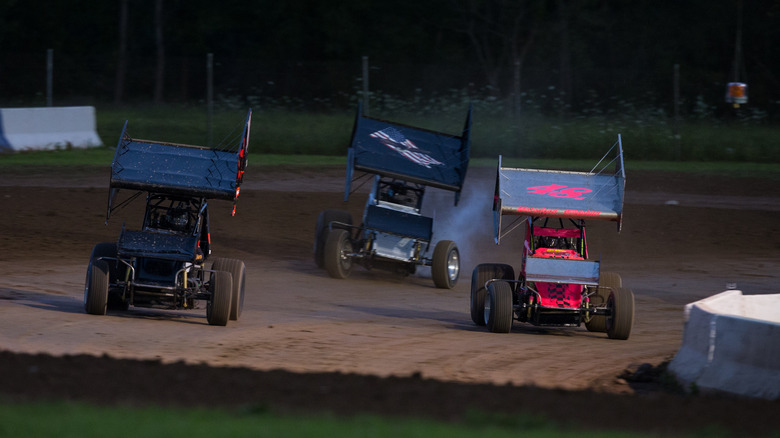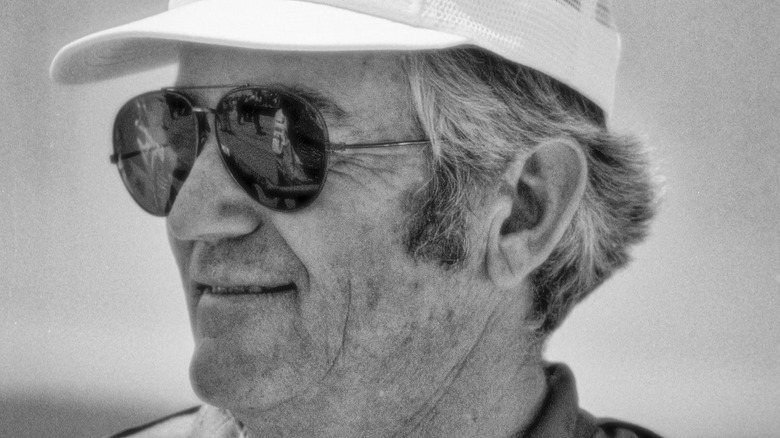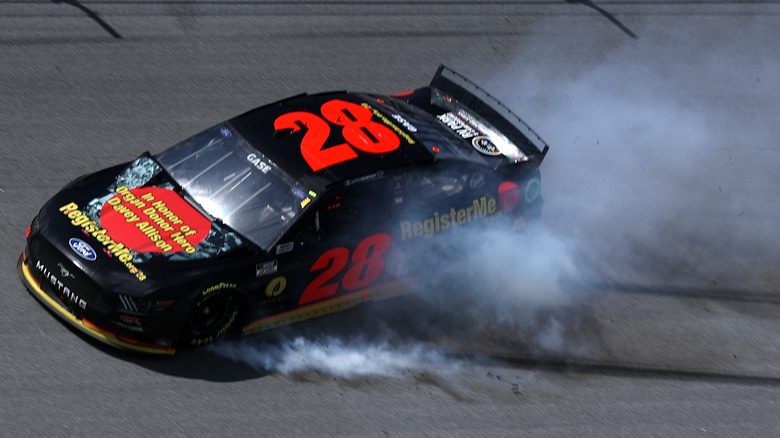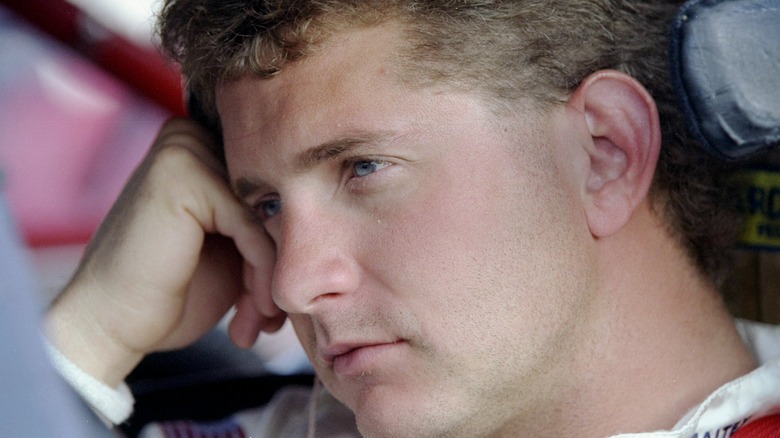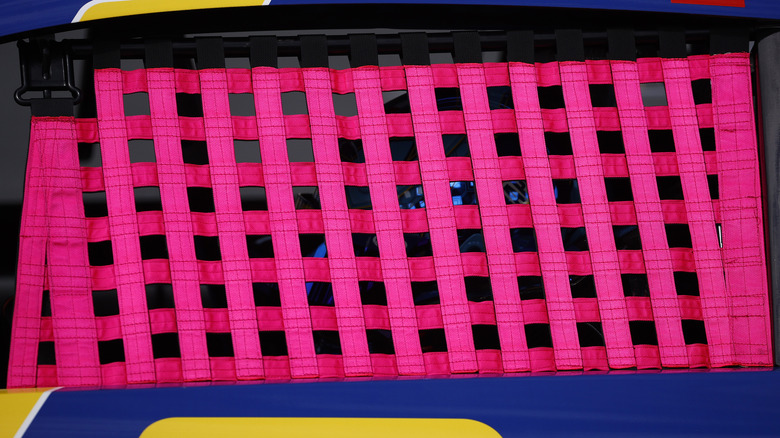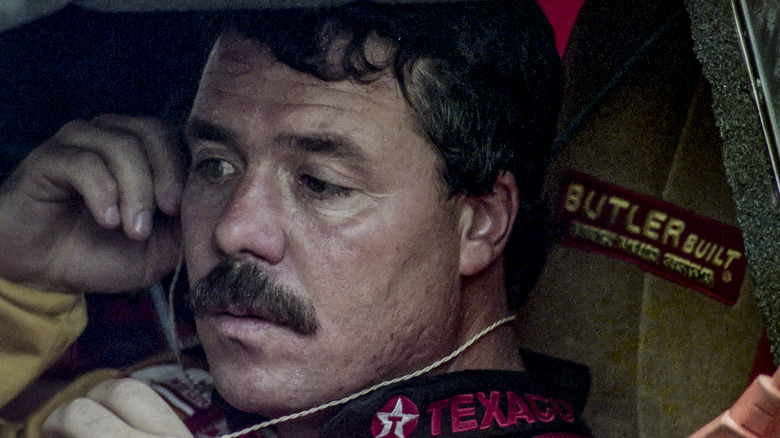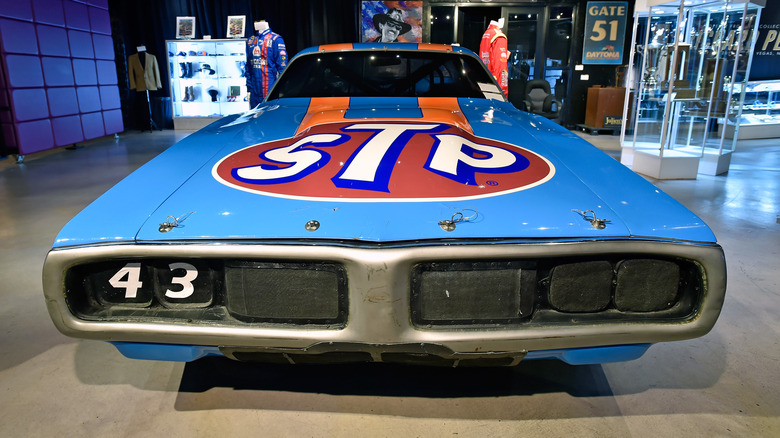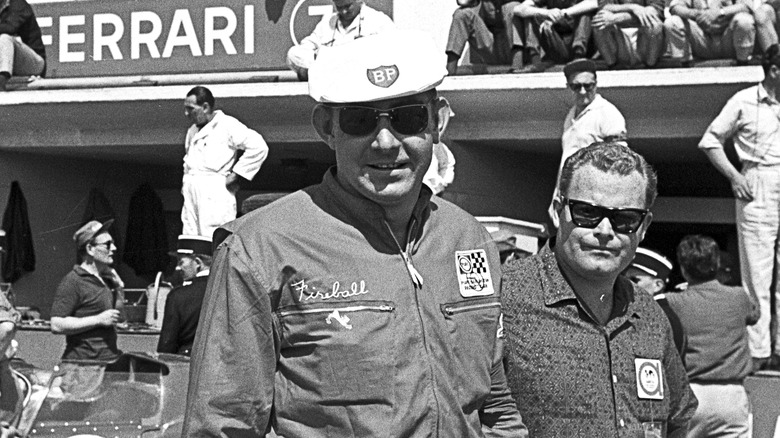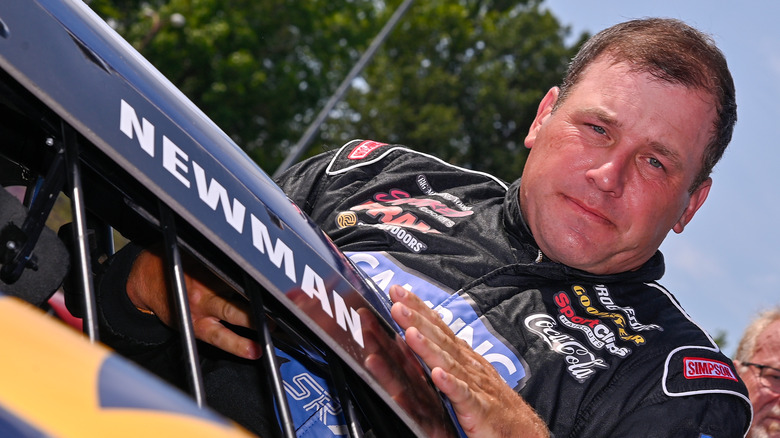Tragedies That Changed NASCAR Forever
The National Association for Stock Car Racing, or NASCAR for short, started on February 21, 1948, and has since transcended into a multi-billion dollar industry and a global phenomenon. William "Bill" France Sr. was heavily involved in racing cars and promotion races in Daytona Beach, Florida, when he realized the rules of races varied from one event to the next and that not all promoters were honest. To regulate the races, France formed NASCAR and served as its first president.
From the very first stock race on June 19, 1949, at the Charlotte Speedway in North Carolina to it becoming one of the most popular sports in the world, NASCAR has a long history of growth. Nowadays, the average top speed for a NASCAR race car is about 200 miles per hour. The competitors behind the wheel of these speed machines are highly skilled and surrounded by strict safety regulations regarding every action taken on or near the track. Over the decades, the safety protocols taken in NASCAR have grown and adjusted to meet the needs of an ever-progressing industry. However, in NASCAR, accidents are never entirely unavoidable, and there's a list of notable tragedies that occurred throughout the years which have changed the sport forever.
Deal Earnhardt's death in 2001
Through a 27-year career in NASCAR with 76 victories, Dale Earnhardt made a name for himself as one of the most popular drivers of all time. His sudden and tragic death on February 18, 2001, shocked fans and fellow industry professionals alike. It was the final lap of the Daytona 500 when another driver's car clipped Earnhardt's, causing his car to turn right into the wall. Onlookers waited for Earnhardt to exit the vehicle, but he never did. He was killed on impact.
Earnhardt's car slammed into the wall at a speed between 157 and 161 miles per hour. This meant that the force of the collision was equal to that of falling from a six-story building, according to SportsCasting. Officials determined that his death was the result of improper restraints around his head and neck. Earnhardt's death is still felt in the NASCAR community to this day. NASCAR took steps to ensure safer racing when, in 2001, the use of head and neck restraints in all NASCAR cars became mandated. The accident that took Earnhardt's life led to the research and development of NASCAR's Car of Tomorrow, which was unveiled in 2007. The Car of Tomorrow was designed to be much safer than standard NASCAR cars, though it comes with increased size and decreased speeds.
Adam Petty's crash at the New Hampshire Motor Speedway
Adam Petty was a 19-year-old rookie on the rise in NASCAR when he crashed while practicing at the New Hampshire Motor Speedway in May 2000. The throttle in his car became stuck while Petty was driving at speeds of around 130 miles per hour. Being unable to control the speed of his vehicle caused him to crash into a wall. Petty died of massive head trauma.
Petty's death was one of two incidents that led NASCAR to develop an additional safety feature for its race cars. A potentially life-saving red button was installed on each of the steering wheels. The purpose of the button is to shut down the car entirely in the event of the throttle not working, like in the case of Petty. NASCAR legend Kyle Petty, Adam's father, said in a statement published by BBC, "The kill switch in the car is like the main breaker block in a house. When you pull the main switch, every light goes off. When you hit the kill switch, all the power of the car just goes away."
Richard Petty's painful scare in 1970
During the 1970 Rebel 400 in Darlington, South Carolina, Richard Petty was driving a Plymouth Road Runner. Everything was going well until he approached turn four on lap 176 of the race, and his steering gave out, causing him to crash. Petty's car went into the outside wall of the track and back toward the pit wall before rolling five times. At some point during the wreck, Petty's arm and shoulder wound up outside the vehicle's window, leaving them to be mangled by the violent crash. Petty was knocked unconscious and suffered severe injuries but ultimately survived the incident.
Petty's arm ending up outside his race car led NASCAR to put window netting in place on all their driver's side doors. The netting on NASCAR windows is a mesh material made with nylon webbing. According to How Stuff Works, the G-forces during a crash are between 50 and 100 times the force of gravity. This means that when in an accident, NASCAR drivers don't have the ability to control their limbs. Without the safety of window netting, more drivers run the risk of injuring or losing an arm.
Rusty Wallace going airborne twice in one season
NASCAR legend Rusty Wallace had an impressive career on the track, with 55 victories under his belt and a 2013 induction into the NASCAR Hall of Fame. His contributions to racing don't end there, either. In 1993 he was involved in two incidents that led to safety measures that have potentially saved the lives of many. The first incident was at the Daytona 500 when a slight run-in with another race car sent Wallace's Pontiac airborne and flipping through the air before slamming back down. Wallace was uninjured, though his car was finished.
The second incident was only a few months later, at the Winston 500, when he again had a run-in with another race car that sent his car airborne. No one was injured in this incident, either. However, when a car takes flight, it raises a lot of eyebrows in terms of safety for those on the ground. These accidents and other times cars went airborne led NASCAR to hire a team of experts to prevent future incidents. The solution was a set of flaps attached to the roof of the cars that would raise when cars ran the risk of lifting into the air. Eventually, NASCAR mandated roof and hood flaps on all cars driving on tracks over a mile long. Though drivers weren't entirely on board with any changes to their cars at first, many have benefitted from the success and added safety of the roof flaps.
Kevin Ward Jr. died after being hit by Tony Stewart
On August 9, 2014, minor-league race car driver Kevin Ward Jr. was competing in the Empire Super Sprints race in New York. When another competitor hit Ward's car, it caused him to crash into a barrier. The crash upset Ward, and he exited the vehicle before heading down the track. While other cars were able to veer out of the way to avoid hitting Ward, the car being driven by Tony Stewart hit him with a rear tire and dragged him twenty-five feet down the racetrack.
Ward's injuries included severe trauma to his chest and heart, along with a broken spine and leg. The 20-year-old race car driver died on the track. Stewart accelerated on the track while other drivers did not upon passing Ward, hitting Ward at a speed of 40-42 miles per hour. Though according to an ESPN report, Stewart did not swerve to hit Ward. The tragedy left an impact on both minor-league racing and NASCAR as shocked and saddened fans, along with Ward's family, tried to make sense of the incident. Stewart took three weeks away from racing before he returned to NASCAR. While during the investigation, many pointed out Stewart's history of being temperamental and violent, he was never charged with any crime regarding Ward's death.
Bobby Allison goes airborne in 1987
The 1987 Winston 500 at what is now the Talladega Superspeedway in Alabama was a race that forever changed NASCAR, thanks to driver Bobby Allison. On lap 22, Allison was driving at about 200 miles per hour when he lost an engine and blew a rear tire. His car was launched and went airborne, hitting the fencing that protects spectators from harm. The car took down around one hundred feet of fencing, and although no one was injured, the crash led to tighter safety regulations.
After the 1987 race, NASCAR realized that the extreme speeds of the cars meant that those watching the race needed more than just some fencing to protect them from harm. NASCAR made the use of carburetor restrictor plats mandatory on high-speed tracks like Talladega. These plates restrict the air and fuel going into the engine, decreasing its output and cutting horsepower. The restrictors are specially selected in a way to prevent cheating and sealed on the car with a NASCAR anti-tampering seal to ensure both safety and fairness throughout the race.
Davey Allison's Talladega Speedway helicopter crash
Davey Allison was at the height of his racing career in 1993 when he drove the number 28 car. He had 19 wins under his belt and was carrying on the family racing legacy. However, on July 12, 1993, when Allison was headed to the Alabama Talladega Superspeedway to watch a friend's son practice, he died in a violent helicopter crash.
Allison was piloting the helicopter and had successfully flown it to the track, but when he went to land, he attempted to turn the craft to the right. The helicopter rose 25 feet in the air and veered hard to the left, causing it to slam into the ground on the pilot's side. Allison had owned that particular helicopter for less than a month when the crash occurred and had been attempting to land it downwind, which isn't normal for aircraft landing. According to AP News, Allison's flight instructor, John Corley, never practiced landing downwind with him. The crash ended up fatal for Allison, and although surgeons tried to relieve pressure on his brain, Allison died the day after the crash.
The death of Kenny Irwin Jr. after his throttle became stuck
On July 7, 2000, 30-year-old Kenny Irwin Jr. became the second death in a two-month time period at the New Hampshire Motor Speedway. He was driving a practice run when he entered turn three and slammed head-on into the wall at 150 miles per hour. After hitting the wall, Irwin's car flipped onto its roof. He was pronounced dead at the hospital from his injuries sustained in the crash.
Irwin's death came just two months after the death of 19-year-old Adam Petty on the same turn of the same track. The death of both drivers was speculated to be due to stuck throttles, leaving the drivers unable to control the speed of their cars. NASCAR took steps to ensure the safety of the drivers in these situations and implemented a kill switch on the steering wheels of their cars. The purpose of the switch is to shut off the engine entirely should the throttle become stuck. The switch is placed within reach of the driver's thumb for easy access.
The death of the Joe Weatherly led to mandatory window netting
Joe Weatherly, affectionately known as the "Clown Prince of Racing," was killed on January 19, 1964, during a race at the Riverside International Speedway in California. The crash happened on lap 87 or 185 and Weatherly wasn't wearing a shoulder harness or a seat belt. There was no window netting installed on his car either due to Weatherly's fear of being trapped in a burning car. Because of the lack of restraints and window netting to protect him, Weatherly's body flailed violently in the crash, and his head exited the vehicle window and hit the wall, killing him.
Since his tragic death, Weatherly has been fondly remembered and, in 2015, was inducted into the NASCAR Hall of Fame. However, possibly his greatest contribution to racing came as a result of his death. In 1971, NASCAR mandated the use of window netting for protection on all stock cars, possibly saving the lives of many other competitors.
Ernie Irvan's '94 crash amidst the NASCAR tire wars
Ernie Irvan was practicing at Michigan International Speedway in 1994 when he got in a crash that nearly ended his life. The accident left Irvan in critical condition, and he fought for life with a skull fracture, swelling of the brain, and bruising on his lungs, among other injuries. Many speculated the cause of the crash to be tire-related as it came during the season in NASCAR known as the "tire wars."
The tire wars came when tire company Hoosier challenged Goodyear as NASCAR's number one tire. The competition meant that new types of tires were used for every track and every race. The goal was to make the fastest tires. Irvan's tragic crash was just one of the reasons the chaos of the tire wars came to an end. Hoosier Tires didn't gain much traction regarding getting any big racing names to sign with them, and they ultimately ended up losing money and conceding at the end of the season. Allowing Goodyear to remain NASCAR's number-one tire brand. Irvan survived despite being given a 10% chance of surviving his injuries and went on to win a Cup race at the Michigan International Speedway.
The 1975 death of pit crew member Randy Owens
Randy Owens was the brother-in-law of NASCAR legend Richard Petty and, at 20 years old, worked as a member of Petty's pit crew. On lap 140 of the 1975 Winston 500 at Talladega Superspeedway, Petty's right front wheel bearing caught fire, and as he pulled into the pit, the crew immediately began trying to put out the fire. In an effort to get more water to the fire engulfing Petty's Dodge Charger, Owens leaned over a pressurized water tank in order to turn it on. The water tank exploded and sent Owens flying 15 feet in the air, crushing his heart. He died instantly.
After the explosion and the death of Owens, the racing team immediately packed up and abandoned the rest of the event. However, Petty went on to win the 1975 Cup series and did so in honor of his brother-in-law. The incident brought awareness to the fact that the dangers of racing weren't only for the drivers but for those in the pit as well.
The 1964 death of Fireball Roberts
On May 24, 1964, Edward Glenn Roberts, often known as "Fireball Roberts," was competing in the World 600 at Charlotte Motor Speedway, the longest race of the season, when tragedy struck. On lap seven, Roberts ran into wreckage from a recent wreck and ended up crashing his own car. He slid backward into a retaining wall before his car flipped and burst into flames and clouds of black smoke with Roberts still inside.
Roberts suffered severe second and third-degree burns and was airlifted to a hospital, where he received treatment for a month. Just as it seemed he was on a path to recovery, he fell ill with pneumonia and sepsis and died on July 2, 1964. His death led NASCAR to develop and mandate fire-retardant uniforms for drivers, along with safer fuel cells in cars to prevent any future deaths. In 1998 Roberts was named one of NASCAR'S 50 Greatest Drivers, and in 2014 he was inducted into the NASCAR Hall of Fame for his contributions to the sport.
Ryan Newman proves that safety implementations matter
After claiming the NASCAR Winston Cup Rookie of the Year at 25 years old in 2003, Ryan Newman maintained a lucrative career in racing. However, racing is never without risk. Newman made it all the way to the final lap of the 2020 Daytona 500 at the Daytona International Speedway before losing control of his vehicle and crashing head-on into the wall right by the finish line. He rebounded off the wall, and his car flipped on its head before another car collided with him and sent his car flying into the air. Newman's car skidded all the way to turn one and left a dangerous trail of sparks and flames in its wake.
While the spectacle left Newman in serious condition, he was able to walk away from the accident and continue his career as a race car driver. The weld on the cage in his car held up and ultimately saved his life. Newman took the incident as an opportunity to praise NASCAR for their long focus on increasing safety for their drivers over the years.
